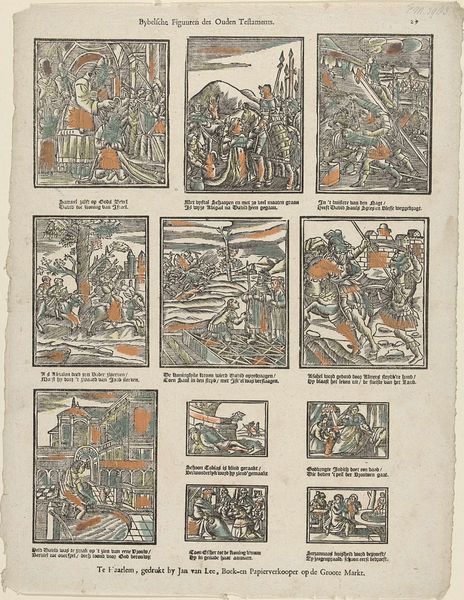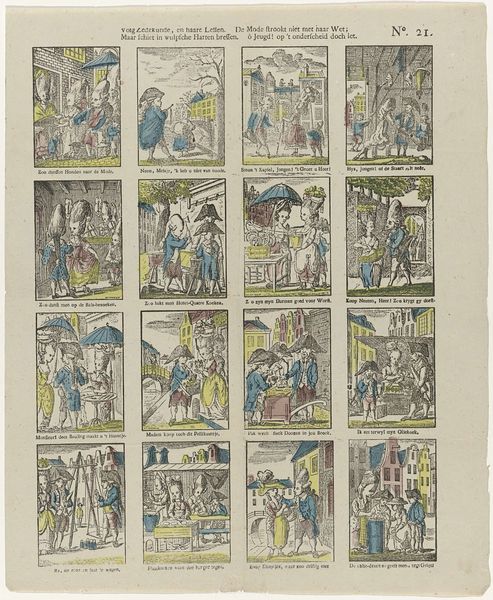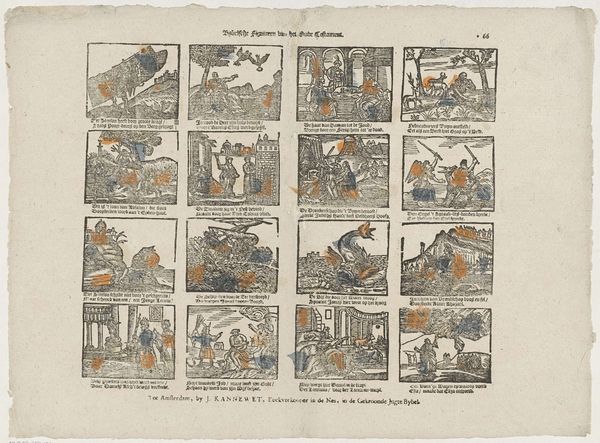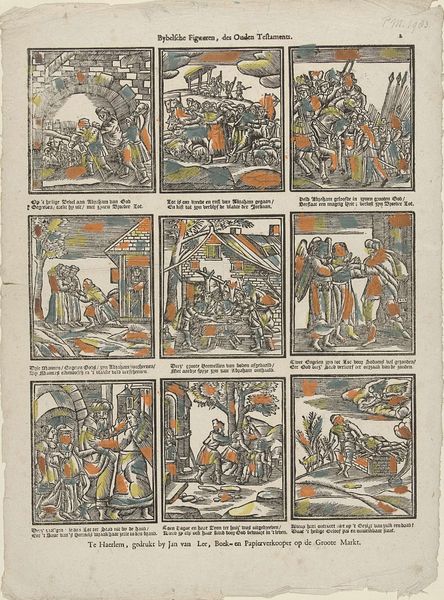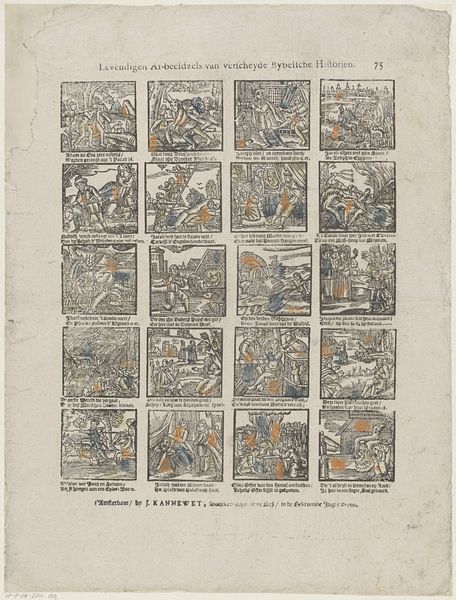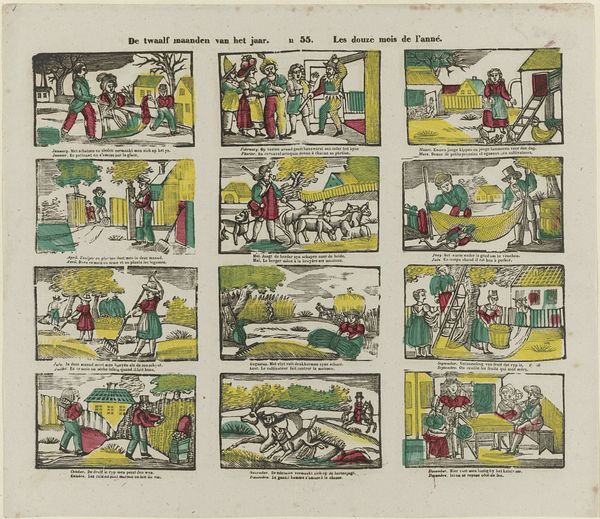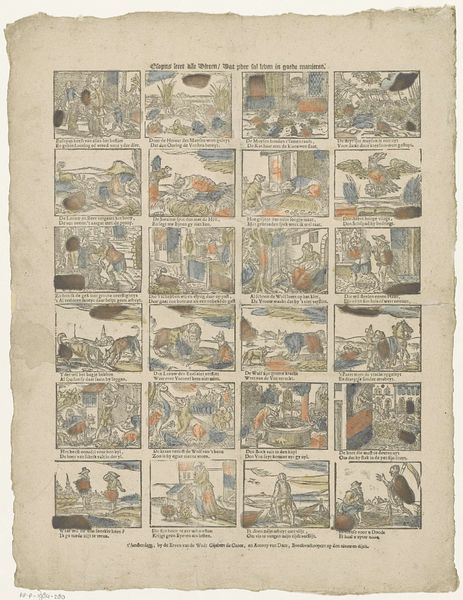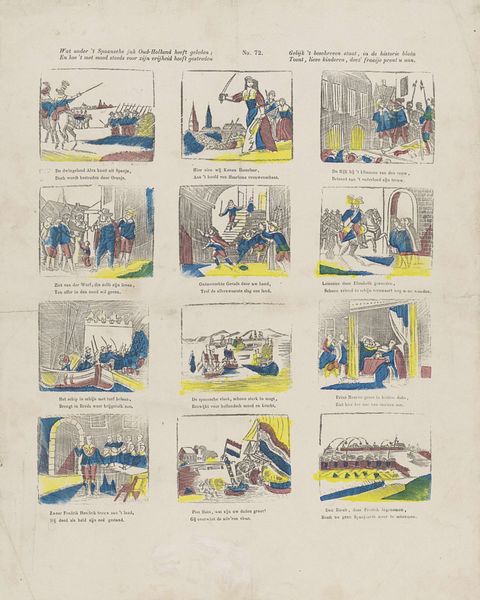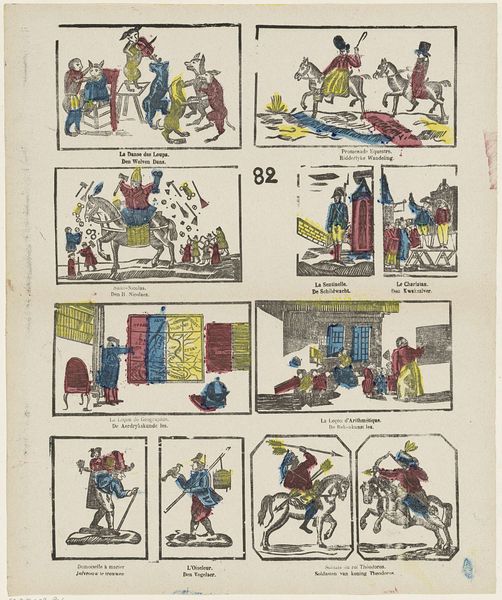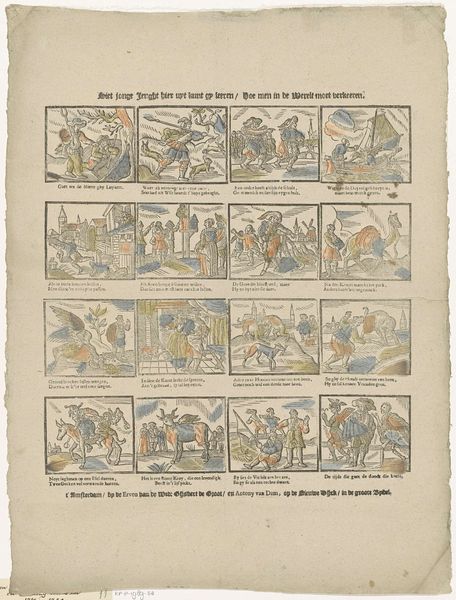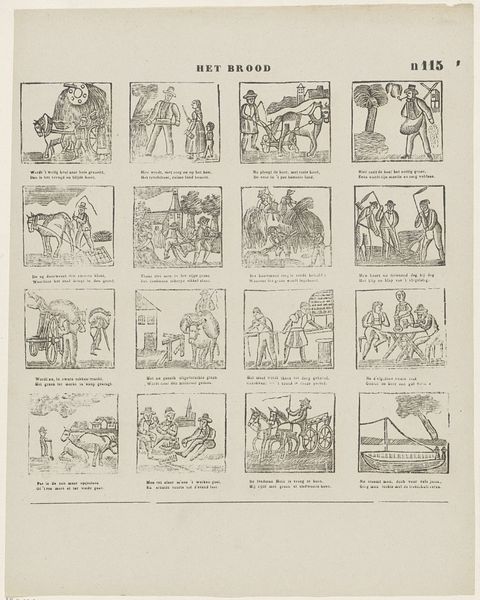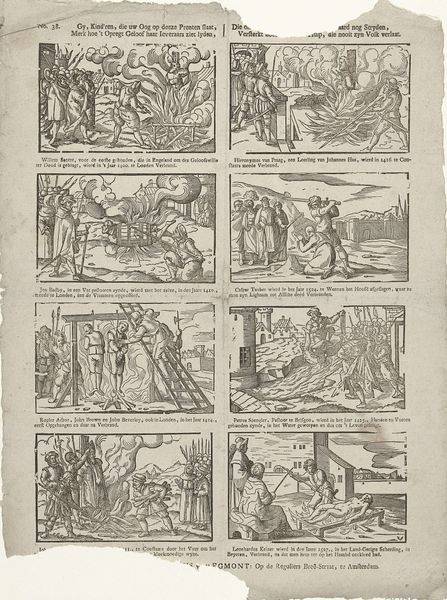
print, engraving
#
comic strip sketch
#
narrative-art
#
comic strip
# print
#
folk-art
#
comic
#
genre-painting
#
engraving
Dimensions: height 371 mm, width 275 mm
Copyright: Rijks Museum: Open Domain
Curator: This print presents “De Fabelen van Esofus,” created between 1739 and 1786. It is an engraving. What are your first thoughts? Editor: Immediately, I notice its connection to folk art, perhaps meant for mass consumption rather than a select audience, almost like a… comic strip? Curator: Precisely! These are indeed arranged much like a comic strip or perhaps more accurately, scenes from a fable. Look at the blocky figures; note how the artist, Jan van Lee, prioritized efficient reproduction using engraving techniques, opting for readily available materials that kept the cost low for widespread circulation. Editor: That production context informs so much. It speaks volumes about the cultural importance of visual storytelling in 18th-century society and who had access to it. These weren't for elite drawing rooms, were they? Curator: Certainly not! The social role of Jan van Lee's print extends into moral instruction through narratives. Given his title "Book and Paper merchant at the Main Market" it seems these inexpensive, rapidly produced images, served as vehicles for imparting communal values. Editor: It also raises questions about how imagery travels and is re-interpreted over time. Does this become incorporated into political discourse or social critique of any kind? Curator: A valid question. Visuals were manipulated to disseminate ideologies throughout that era, so these fables had the capacity to shape moral frameworks. We see how such narratives get embedded within the broader social consciousness through mass media. Editor: Analyzing the context gives us clues as to how such narratives reflect and perhaps perpetuate ideas of social classes and their behaviour during the period. What this piece lacks in finesse, it more than makes up for with historical punch. Curator: Indeed. This unassuming print grants invaluable insight into artistic manufacture and collective interpretation during the Enlightenment, linking these engaging engravings to cultural ideals. Editor: It reminds me that even a relatively modest artwork carries its own profound reflection on cultural influence and artistic worth.
Comments
No comments
Be the first to comment and join the conversation on the ultimate creative platform.
